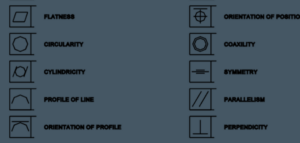Saving Time and Cost in Small Metal Parts Inspection
We often talk about how important inspections are to the manufacture of small metal parts, helping to ensure the quality of components that make up thousands, if not millions, of products.
Yet, 100% inspection eats up significant time and cost — plus it still does not guarantee 100% compliance. That is why manufacturers and their customers rely on a sampling plan in quality control (QC).
Good Reasons to Use Sampling Plans for Inspection
Visual inspections — whether with the naked eye or using sophisticated optical tools — are done to detect a variety of surface finish issues in metal parts, from corrosion and contamination to cracks and surface irregularities.
But given the large quantities that most manufacturers work with, it is impractical to spend the amount of time and significant money required to look at 100% of the parts in every lot. For example, here at Metal Cutting Corporation, we routinely produce lots consisting of 100,000 parts.
Inspecting such a large lot, it is also easy to make an error. Put a part in the wrong bin, have a micrometer placed slightly off when measuring, or just blink — any of these can mean missing some defect that would have an impact on end product performance.
In addition, even with a range of very precise tools available for inspecting parts, it is impossible to examine every tiny segment of a part’s surface. That means even if you do 100% inspection, it is not precisely 100%.
By definition, a sampling plan is a statistical method of determining whether to accept or reject a lot of material that is being produced. With a QC sampling plan, a relatively small number of pieces from the lot are inspected to determine if the entire lot will be accepted or rejected based on the number of defective pieces in the sample.
AQL in Quality Control Sampling
At Metal Cutting, experience has shown us that inspecting a small portion of the parts in a lot is not only faster and more cost-effective — it also allows us to pay closer attention to the inspection process. With every piece in the sample being more carefully inspected, the likelihood of errors or of simply missing something is reduced.
Best of all, a quality sampling plan provides statistically valid results and high confidence that if the sample is defect-free, the entire lot will meet the customer’s requirements for an Acceptable Quality Level (AQL).
Statistically, AQL is a measure of the maximum number of defective goods that would be considered acceptable in a particular sample size. It corresponds to the percentage of a production run that can be rejected before some corrective action must be taken.
The higher the AQL, the fewer the number of parts that will be inspected. This means with a lot size of 100,000 pieces, for example, 123 pieces would be inspected at AQL 0.4, but only 29 pieces would be inspected at AQL 4.0.
The Standards for Sampling Plans
In sampling plans, the number of pieces to be inspected and the acceptable number of defective pieces in a sample are usually based on AQLs and index values included in published standards such as ANSI/ASQ Z1.4-2008, from the American National Standards Institute (ANSI)/American Society for Quality (ASQ).
You can also find lot and sampling size values and other technical information in the book Zero Acceptance Number Sampling Plans, Fifth Edition, by Nicholas L. Squeglia.
Here at Metal Cutting, we prefer to inspect metal parts using the standard AQL 1.0 c=0, which is a zero acceptance sampling plan from Squeglia’s book. This plan dictates how many randomly selected parts we will inspect, depending on the lot size, to statistically assure that all parts are of acceptable quality.
Using the Zero Acceptance AQL 1.0 C=0 Sampling Plan
Statistically speaking, N is the population of total parts, n is the sample size, and c is the amount of bad parts that will be allowed. So, a c=0 sampling plan simply means that if one defect is found among the sample size (n), the entire lot (N) is either rejected or subject to 100% inspection.
The associated AQL determines how many randomly selected parts will be inspected, based on the total lot size. For example, employing an AQL index value of 1.0 as our standard, we would inspect:
- A random sampling of 50 parts in a lot size of 5,000 small metal parts
- A random sampling of 74 parts In a lot size of 100,000 pieces
Using our preferred zero acceptance sampling plan AQL 1.0 c=0, if just one randomly selected part in the sample fails inspection, then the entire lot is rejected or 100% inspection must be performed for the failed characteristic. If the entire sample passes inspection, then the entire lot is accepted
When to Use a Sampling Plan in Quality Control
At Metal Cutting, where we produce thousands of small metal parts every day, we like to say that inspecting parts for quality is part of our DNA. So, we typically begin every project with a sampling plan that spells out the specifics of metal parts inspection, including the associated AQL and index values.
By providing this level of detail, with strict guidelines for parts inspection, we find that sampling plans help us ensure acceptable quality levels and cost-effectiveness.
Because of our quality commitment, we don’t just inspect final parts at the end of manufacturing, prior to packaging and delivery. Rather, our process includes QC sampling at various stages.
This includes receiving, where we take in and inspect not just our raw material but also any customer-supplied materials that we will be using to make a part. We also do QC sampling at a designated step (or steps) during production — and of course, at the end.
This enables us to be sure that quality is tightly controlled throughout the process.
Other Statistical Tools for QC
Of course, sampling plans are not perfect either, so there may be one or two imperfect parts in a lot of 100,000. That’s where other statistical tools can be brought into the process.
For example, a customer might ask for a Cpk value of 1.33 or better, to ensure that (statistically speaking) the parts are close to the nominal value rather than the upper or lower limits of the specifications for tolerance.
If the customer has very tight tolerances and is using the maximum capabilities of a machine, then Cpk is not the best option. That’s because the entire tolerance range will need to be used to meet the tight specification.
However, with a looser tolerance range, the Cpk statistic can be used to show conforming processes and outcomes.
Why We Prefer the AQL 1.0 C=1 Sampling Plan
Sometimes customers request a different AQL level, such as 0.4 (vs. 1.0), which will increase the number of sample parts to be inspected and, in turn, add to the cost of inspection.
In addition, customers might request different types of sampling plans, such as one based on standards created by ANSI, which requires larger sample sizes but allows for some parts to be out of spec. For example, an ANSI/AQL Z1.4–2008 chart specifies that in a normal sampling plan with a lot size of 5,000 pieces, an AQL of 1.0, and inspection level II:
- The random sample size would be 200 pieces
- The lot could be accepted with up to five sampled parts out of spec
- The lot would be rejected and subject to 100% inspection only if six or more parts were out of spec
However, we find that our preferred standard, AQL 1.0 c=0, is a more efficient and cost-effective sampling plan. By allowing us to inspect fewer parts without increasing the statistical probability of rejectable parts, AQL 1.0 c=0 helps us provide a high level of quality assurance while reducing inspection costs.
In addition, shipping a lot that we know will include bad parts runs counter to our quality goal, which is to have ZERO inspected parts out of spec. That makes a zero acceptance sampling plan the best fit for both our business and our customers’ needs.
Statistical Validity Wins the Day
In the end, with a statistically valid sampling plan, we can inspect a smaller number of pieces more carefully and give customers a high level of confidence that if the sample is acceptable, the entire lot is acceptable.
Again, you can find lot and sampling size values and other technical information about QC sampling plans — as well as documentation about the validity of AQL c = 0, the sampling plan that Metal Cutting highly recommends — in Squeglia’s book (cited above).
But whatever inspection methods and sampling plans you decide to use, it is important to include this information in your specifications and your request for a project estimate. That way, your manufacturing partner can make recommendations and provide an accurate and timely quote — one that includes inspection in the total cost of your metal parts.
You can learn more about specifying your requirements for parts inspection, as well as for metal parts cutting and finishing for your small metal parts application, by downloading a free copy of our comprehensive guide, How to Fine-Tune Your Quote Request to Your Maximum Advantage: Frequently Asked Questions in Small Parts Sourcing.






